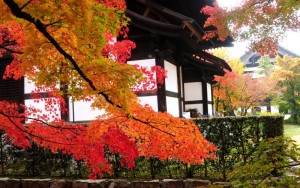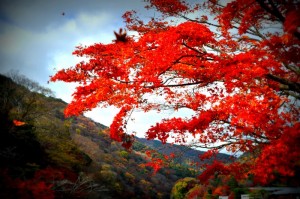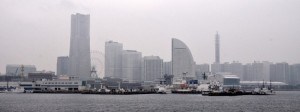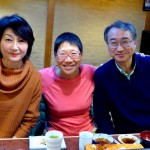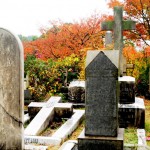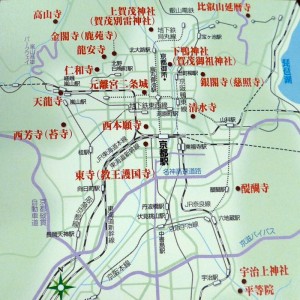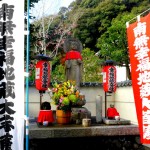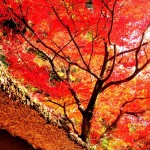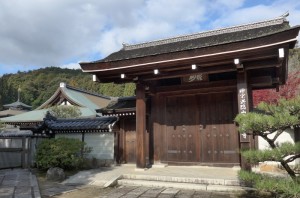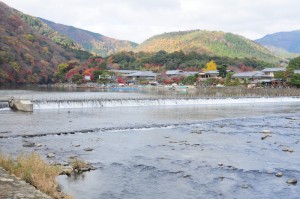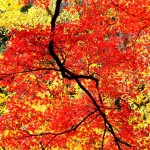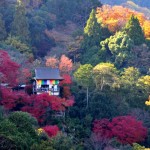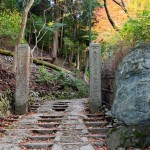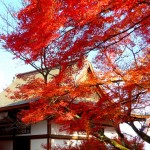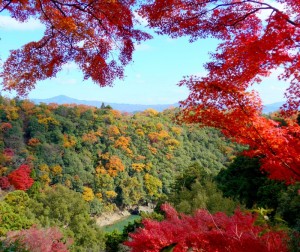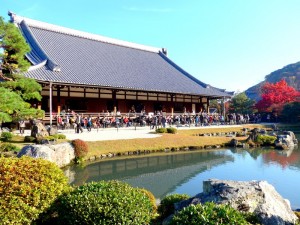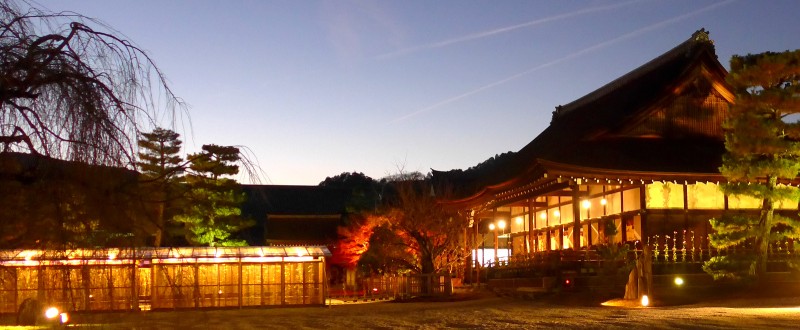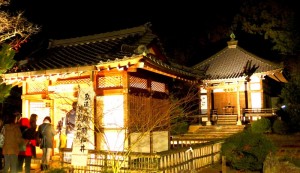November 24 – 27: Foliage Viewing in Kyoto & Joyful Reunion
November 24 Monday: Kyoto – Hachioji by train
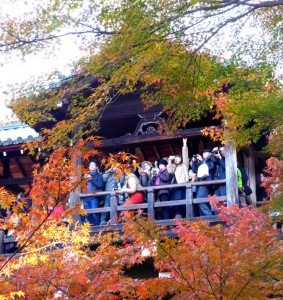 I had a morning for foliage viewing before taking the train at 12:56pm. There are 14 properties in Kyoto with World Heritage status. Based on latest foliage reviews, I decided to go to Tofukuji 東福寺, a large Zen temple founded in 1236 by Kujo Michiie and a head temple of one of the schools of the Rinzai sect of Zen Buddhism. The most popular view is the Tsutenkyo Bridge that spans a valley of lush maple trees. The view from the bridge is equally spectacular.
I had a morning for foliage viewing before taking the train at 12:56pm. There are 14 properties in Kyoto with World Heritage status. Based on latest foliage reviews, I decided to go to Tofukuji 東福寺, a large Zen temple founded in 1236 by Kujo Michiie and a head temple of one of the schools of the Rinzai sect of Zen Buddhism. The most popular view is the Tsutenkyo Bridge that spans a valley of lush maple trees. The view from the bridge is equally spectacular.
I took a taxi and joined a long queue outside the gate at 7:45am. The ticket office opened at 8:30am. The entrance ticket for the Tsutenkyo Bridge is ¥400. I jumped with joy when seeing hundreds of majestic maple trees, magical fall colours, the bridge, a thronging crowd and perfect morning light.
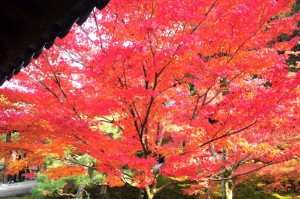 |
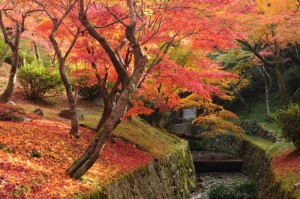 |
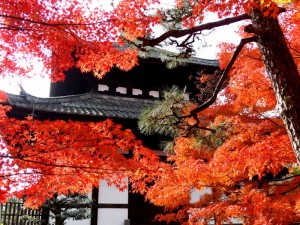 |
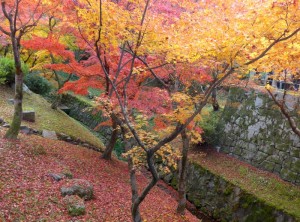 |
This’s the best fall colours I have seen in my life! I spent three hours gazing at the colours and walking in the garden. I wish I could have the garden for myself for one minute!
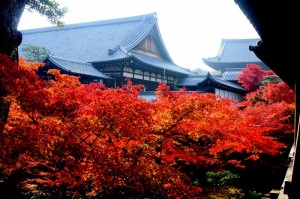 |
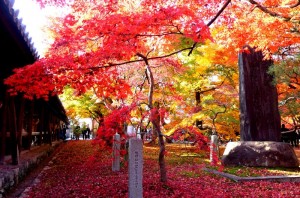 |
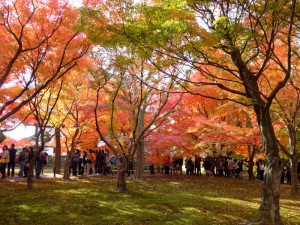 |
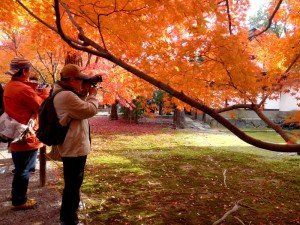 |
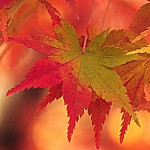 |
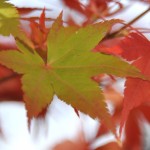 |
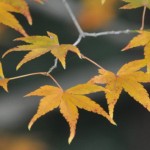 |
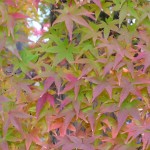 |
I left around 11:30am and took a JR train to Kyoto Station (only one stop). As I was early, I took the 11:56am Shinkansen to Shin-Yokohama.
I arrived in Shin-Yokohama at 2:22pm. Miyo had expected me arriving on the Chuo Line from Tsumago on Platform 2 at Hatchioji station at 4:55pm as I had not told her my detour. I had plenty of time and went window-shopping in Shin-Yokohama before taking a local train to Hachioji Station.
Miyo shocked to see me on Platform 2 at 4:45pm. I explained to her that I made a quick trip to Kyoto as the weather might be raining in the next few days and the leaves might drop. She concludes I am very “flexible” and energetic. Miyo is too kind not to describe me as crazy!
Tet her husband waited in his car outside the station. They took me to see illumination in Sagamiko Pleasure Park 相模湖. The park was packed with family and children. The illumination is nicely done.
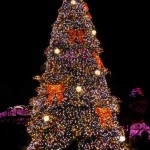 |
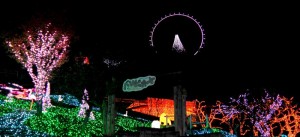 |
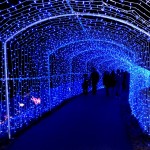 |
It is illegal to drive after drinking. We therefore returned home and took a taxi to a sushi restaurant nearby. We had an excellent dinner with beer, saki (both cold and hot) and dozens of sashimi and sushi. We had the restaurant to ourselves and the chef is their old friend. It’s the best sushi meal I have ever had.
November 25 Tuesday: Yohohama
 The weather was bad: grey, wet and cold. But it did not stop Miyo from taking me to Yokohama横浜市. In 1853-54, Commodore Matthew Perry arrived south of Yokohama with a fleet of American warships and demanded the opening of several ports for commerce. The Port of Yokohama was opened on June 2, 1859. Today, Yokohama, Japan’s second largest city with a population of 3.7 million, is a major port and commercial centre and transportation hub.
The weather was bad: grey, wet and cold. But it did not stop Miyo from taking me to Yokohama横浜市. In 1853-54, Commodore Matthew Perry arrived south of Yokohama with a fleet of American warships and demanded the opening of several ports for commerce. The Port of Yokohama was opened on June 2, 1859. Today, Yokohama, Japan’s second largest city with a population of 3.7 million, is a major port and commercial centre and transportation hub.
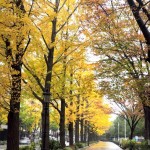 |
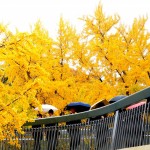 |
We took a train and arrived at the Minato Mirai 21 (“Port Future 21”) station around 11am. This is a major urban development project started in 1983 on reclaimed land. The Landmark Tower was once the tallest building in Japan. The Cosmo Clock was the world’s biggest clock and the tallest Ferries wheel in the world when it was built in 1989.
We came prepared with umbrella and raincoat. It’s a pleasant walk to the harbourside. Miyo saw a harbour cruise boat and we hopped onto it just before its noon departure. A cruise in a wet day is a good way to see the city and its skyline. Yokohama is a busy port. I saw some tailored-made boats in funny shape and learnt that each of them which carries as many as 8,000 new cars!
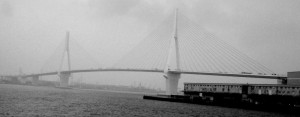 |
 |
There are two islands (probably man-made) where gas and power plants and incinerator are located. Hong Kong should learn from Yokohama as we are in desperate need to find new landfills or build incinerators. No one wants these facilities in his/her backyard. To create an artificial island off the mainland can be a solution.
After the cruise, we headed to the Doll Museum which was unfortunately closed. Miyo took me to see “The Bluff”, the area of foreign settlement overlooking the harbour. We walked through the Harbour View Park where the French Consulate was located before a fire. But the most interesting place is the foreigners’ cemetery where some 4,200 foreigners from 41 countries had been buried.
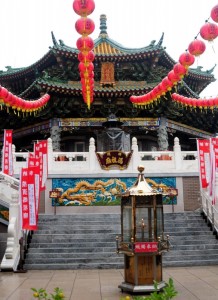 |
|
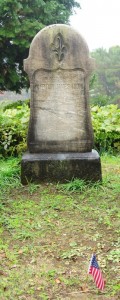 |
We descended onto the fashionable Motomachi shopping area, close to Chinatown which is probably the largest one in the world. According to a shop-keeper, of the 300,000 Chinese from the Mainland living here, 200,000 come from the Fujian Province. This Chinatown is clean and tidy (perhaps owing to the Japanese culture and high standard of cleanliness). There are dozens of Chinese restaurants. I spotted a nice one and went in. We had dim sum buffet lunch. The chef comes from Hong Kong and I find the food tasty and authentic.
Before going home, I accompanied Miyo to visit her 86-year-old mom in a residential home. She is in good health but forgetful. The home is well-run, spacious and brightly-lit. Her room with private facilities cost about US$2,000 a month. Wow, the same facilities in Hong Kong would cost much more. Like Japan, Hong Kong has an ageing population: provision of adequate residential homes for the elderly is a pressing issue.
At 7:30pm, we took a taxi to Miyo’s favourite pub. We thought we were not hungry. But we ended up having a bottle of Beaujolais (which arrived a few days ago from France), four beers and four dishes (a green salad, lamb chop, spaghetti and pizza). The food was nicely prepared and presented! Tet finished work and joined us. We had a great time chatting and drinking. By the time we went home, it was midnight! I could believe time had gone so quickly.
November 26 Wednesday- Hachioji – Tokyo – Kyoto
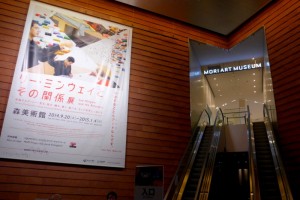 My destination today was the Mori Art Museum森美術館. Miyo dropped me at a train station near her place where I took the Keio Line to Shinjuku新宿. I took a subway to Roppongi where I left my luggage in a locker.
My destination today was the Mori Art Museum森美術館. Miyo dropped me at a train station near her place where I took the Keio Line to Shinjuku新宿. I took a subway to Roppongi where I left my luggage in a locker.
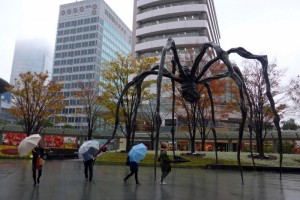 |
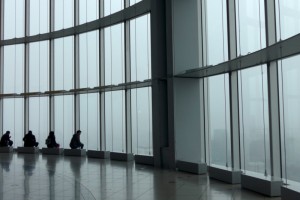 |
Mori Tower is located in the Roppongi Hills complex. Opened in 2003, the tower at 238m is the 5th tallest building in Tokyo. Founded by Minoru Mori who died in March 2012, the museum located on the 53rd and 54th floor presents exhibitions by contemporary artists.
I made my way here to see an exhibition “Lee Mingwei and His Relations”. I met Lee, a Taiwanese born artist living in the States, in Hong Kong in early November when he talked about his art projects.
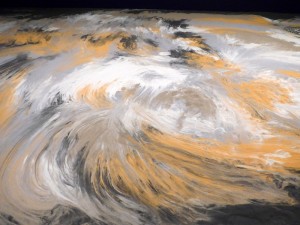 |
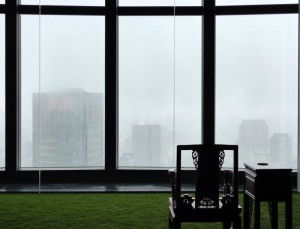 |
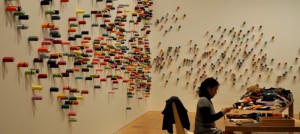 I spent over two hours looking at Lee’s eight projects on “relations” and “connectivity” with people, art and the world. I Iove sand and deserts for their transient, empty, timeless, light and minute yet substantial and powerful nature. Hence I find two installations i.e. “Guernica in Sand” and moving sand in a dark room with a few stones and music, most impressive and thought provoking.
I spent over two hours looking at Lee’s eight projects on “relations” and “connectivity” with people, art and the world. I Iove sand and deserts for their transient, empty, timeless, light and minute yet substantial and powerful nature. Hence I find two installations i.e. “Guernica in Sand” and moving sand in a dark room with a few stones and music, most impressive and thought provoking.
There is also a beautiful film project by a Danish artist Jacob Kirkegaard. His work is a sound and video installation on natural landscape of Fukushima. I curled up comfortably in a cushion on the floor and closed my eyes to enjoy the sound of nature. Occasionally I opened my eyes to capture the changing scenery in different seasons. I had a remarkable journey in the wildness without leaving the theatre!
4 Days of Foliage Viewing in Kyoto (November 27-30, 2014)
Japan’s foliage is a ‘must-see’. One of the best place to see foliage is Kyoto which is enchanting with rich history, culture and natural beauty in different seasons. In 1994, 17 sites were together designated UNESCO Heritage sites under the title “Historic Monuments of Ancient Kyoto“. This includes two sites in Uji (Byodoin Temple and Ujigami Shrine) and one in Otsu (Enryakuji Temple on Mount Hiei). The remaining 14 sites located in present day Kyoto include the Nijo Castle, two shrines (Shimogamo Shrine and Kamigamo Shrine) and 11 temples (Kiyomizu Temple, Koke-dera, Nishi Honganji Temple, Toji Temple, Kinkakuji Temple, Ryoanji Temple, Ninnaji Temple, Kozanji Temple, Daigoji Temple, Ginkakuji Temple and Tenryuji Temple).
Tourism infrastructure is excellent in Kyoto which is small and well-served by bus, subway, JR as well as private railway lines. Most tourist information is available in English, Chinese and Korea.
The main challenge was to find accommodation at a reasonable price during the peak season. By the time I started to firm up my itinerary in early November, Piece Hostel close to the Kyoto Station, Toyoko-Inn and other budget hotels were mostly booked. Finally I had to settle for K’s House Backpackers’ Inn (10 minutes’ walk from the Kyoto Station) which has good reviews.
K’s House has two blocks. As all single rooms were taken, I stayed in a 4-bedded dormitory in the low block for the first two nights. The elderly Taiwanese couple in my room was nice but the man snored so loudly that I could not sleep. Luckily I was moved to another room with a few Korean ladies in the high block with better facilities and more space on the third day. In any case, I prefer the 5-starred Piece Hostel which provides an excellent free Japanese breakfast.
Every day I travelled with a bus day-pass (¥500). Kyoto has narrow lanes in most areas. Hence, traffic can be congested and the buses to the most popular attractions are jammed packed. I followed the foliage reports by Japan Guide in planning my itinerary. Normally I walked the whole day visiting a handful of spots with beautiful foliage. The entrance fee ranges from ¥400 to 600.
Day 1 (Thursday) – Good weather- Arashiyama & Sagano
Arashiyama (western side of Kyoto) is one of the top destinations for cherry blossoms, foliage, temples and natural scenery.
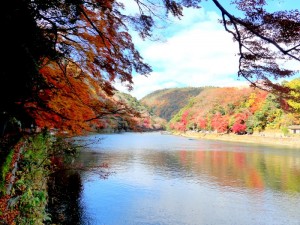 |
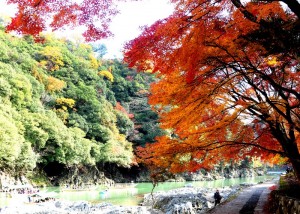 |
Kegonji Temple (Suzumushi-dera Temple) established by Hotan Sho-nin in 1723 belongs to one of Zen Buddhism schools. The name ‘suzumushi-dera’ comes from the sound made by the bell crickets regardless of the season. This temple is small and simple.
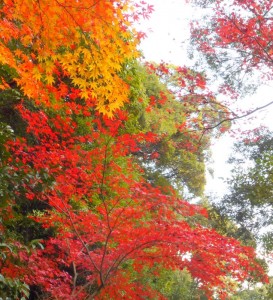 |
|
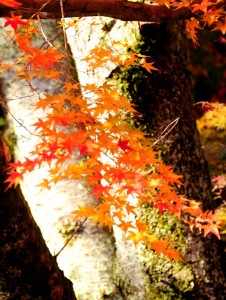 |
Many Japanese visit the temple as Kofuku-Jizo – Guardian Deity of Happiness who stands by the gate is said to grant a faithful follower one wish. The abbot also gives a 30-minute sermon to visitors. I left the sermon after three minutes.
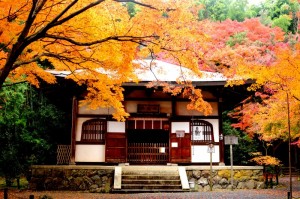 |
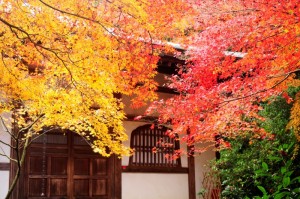 |
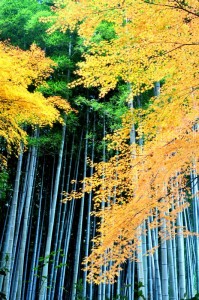 |
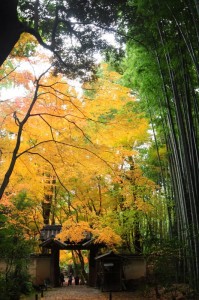 |
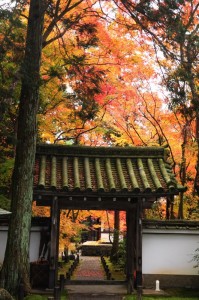 |
Jizo-in Temple was founded in 1367 as a temple of Rinzaishu sect. Rev Muso-Kokushi (1275-1351) was named as the founder. It is sacred to the guardian deity of children. It is also known as the “Temple of Bamboo” as bamboo trees are abundant. As it is more remote with few visitors, I enjoy the serene and tranquil atmosphere and the beautiful foliage and bamboo forest.
Nearby is Koke-dera (Moss Garden Temple) 苔寺 which admits only visitors with reservation. I took a photo from outside before taking the 10:36am Bus No 73 to Togetsu-kyo Bridge.
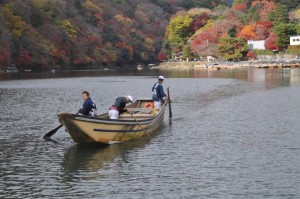 |
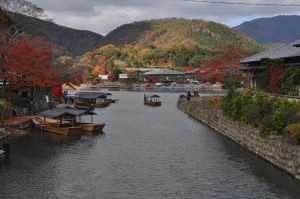 |
I walked along the left bank of the Hozu River and took a steep path to Daihikaku Senkouji Temple大悲閣 which affords a fantastic view of Kyoto. The fall colours along the river and from the temple were gorgeous!
 |
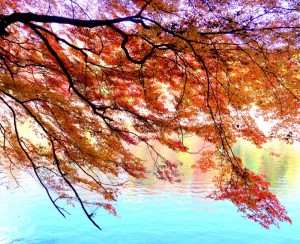 |
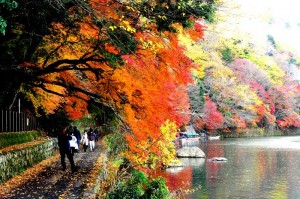 |
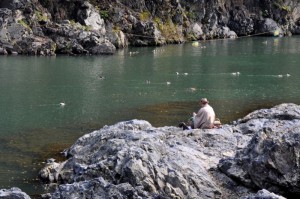 |
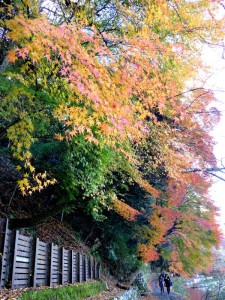 |
|
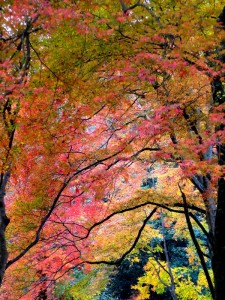 |
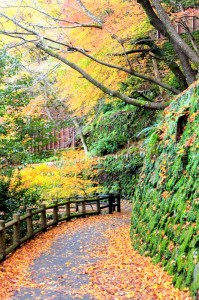 |
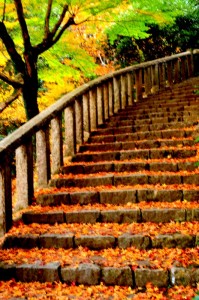 |
|
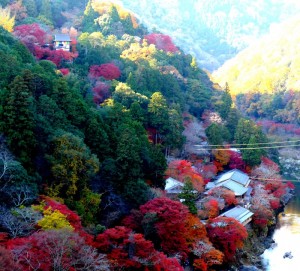 |
I paid ¥400 for a boat ride to the other side of the river. Then I walked uphill to a park and through the Path of Bamboo before arriving at the northern gate of Tenryuji Temple天龍寺. The entrance fee to the garden is ¥500 and a combined ticket including the buildings is ¥600.
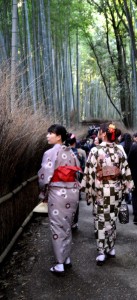 |
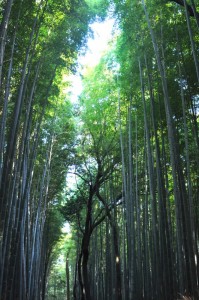 |
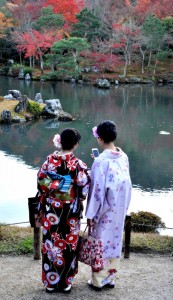 |
The site first occupied in 9th century as Japan’s first Zen temple, was changed into a villa in the 13th century by Emperor Kameyama (1249-1305). It was established in 1339 by shogun Ashikaga Takauji (1305-58) in memory of Emperor Go-Daigo (1288-1339) who ordered the villa’s conversion to a Zen temple.
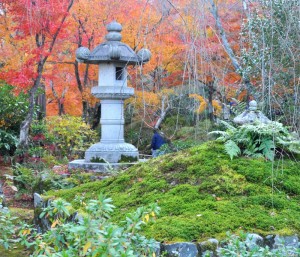 |
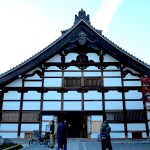 |
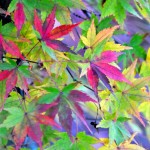 |
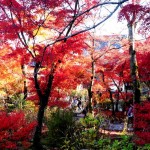 |
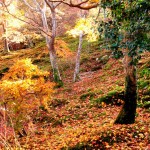 |
The temple has been ravaged by fires eight times. Most of the buildings were constructed during the Meiji period (1868-1912). The Sogen Garden, a landscape garden in front of the Main Hall is one of the oldest in Japan. Unfortunately it was too crowded and the foliage had already past its prime.
After having a bowl of noodles at 4pm, I took a bus to the nearby Daikakuji Temple大覚寺. Originally built in the early 800s as the detached palace of Emperor Saga, it was converted into a temple of Shingon Buddhism. The buildings are connected with a network of walking paths with expansive landscaped gardens.
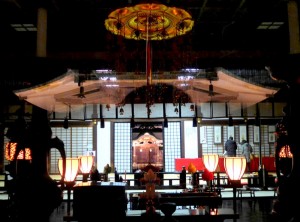 |
The Osawa Pond, a 1200-year-old man-made lake, is the oldest and last surviving example of a Shinden style garden. The Shingyohoto Tower was built in 1967 to commemorate the 1150th anniversary of the Heart suta transcription by Emperor Saga.
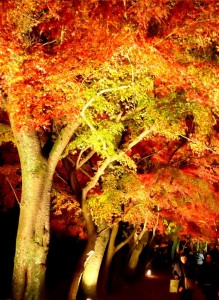 |
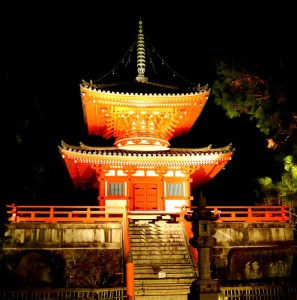 |
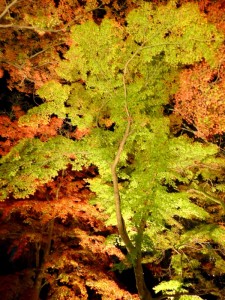 |
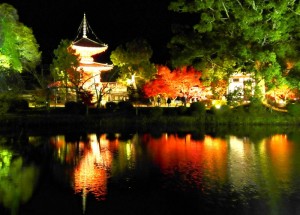 |
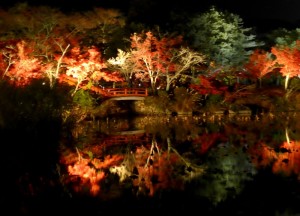 |
There is no admission after 4:30pm as it has to get ready for night viewing at 5:30pm. I had to go for night viewing which turned out to be a nice surprise. The temple and foliage with illumination are beautiful and atmospheric (somewhat mysterious). I am impressed by the layout, minimal furnishing, painting and gardens of the principal buildings. The whole setting with illumination and maple trees was exquisitely beautiful.
Daikakuji Temple is my favourite of the day. I shall return to fully appreciate its grandeur in day time. Time flied and I had no time to take the 23-minute scenic train ride (¥620 one way) or visit Nison-in Temple and Jojakkoji Temple which are known for their foliage.


